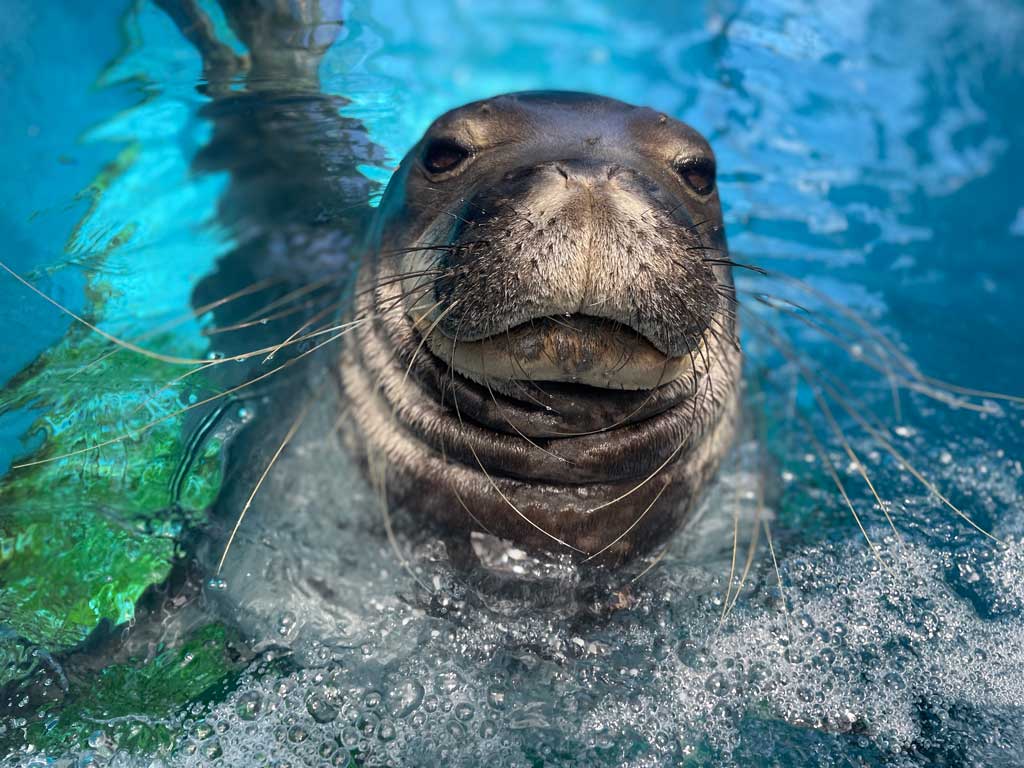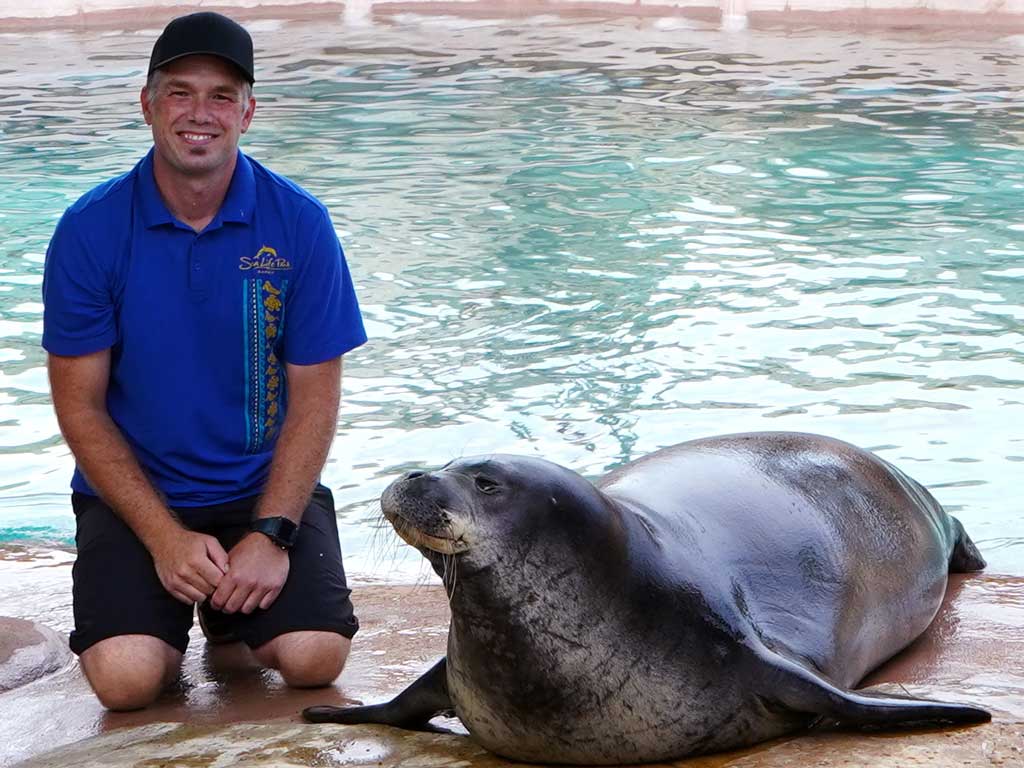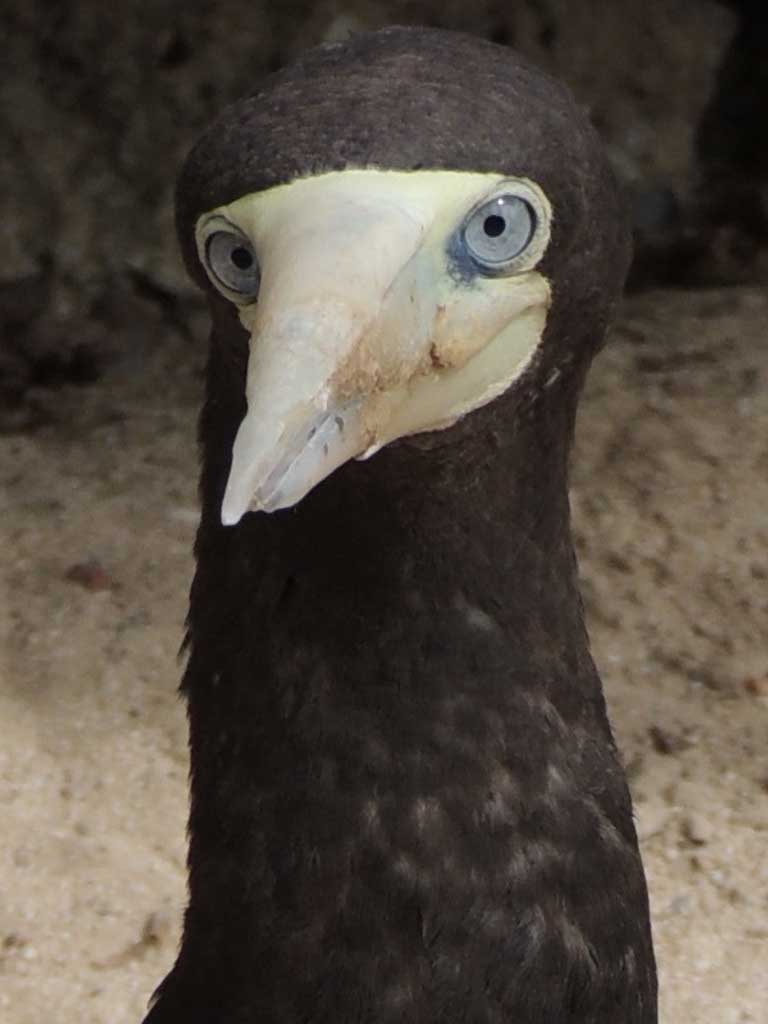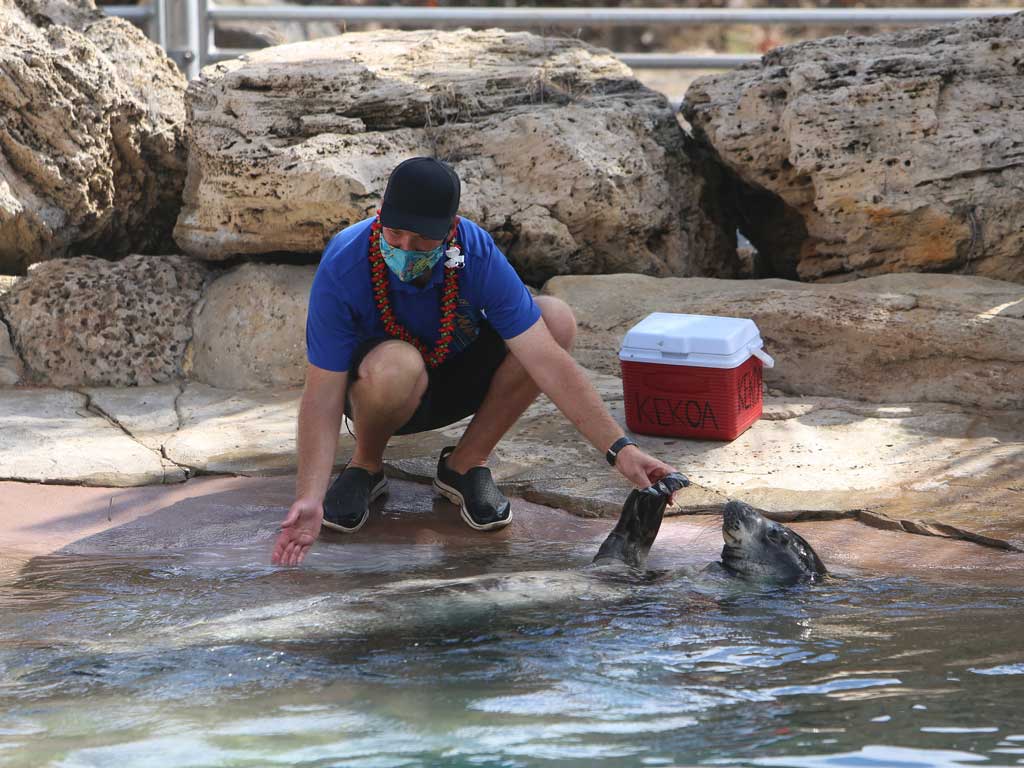Kekoa
After a decade at the heart of groundbreaking research in California, Hawaiian monk seal KE18 has returned to Hawai‘i to live at Sea Life Park. Also known as Kekoa (“the warrior” in Hawaiian), the seal will continue to be an educational ambassador for his kind from his new home on O‘ahu, with Sea Life Park guests able to meet him and learn more about monk seals.
Hawaiian monk seals are endangered, with only some 1,400 seals remaining in the wild. After exhibiting aggression towards an already fragile population of pups, Kekoa was brought to the University of California at Santa Cruz through coordinated efforts with National Oceanic and Atmospheric Administration (NOAA), Sea Life Park Hawaii, Waikiki Aquarium, and Living Marine Resources (LMR). There, he became part of an important monk seal hearing and communications study—and surprised his human handlers with a gentleness that was contrary to his reputation in the wild. His amicable nature was something noted by those in contact with him before his departure from Hawai‘i as well.
Students and scientists have been able to collect invaluable information from Kekoa, who was trained to participate in hearing tests both underwater and on land, that may one day help to protect future generations of monk seals. While Kekoa will never be able to be released back into the ocean, his journey and contributions to marine life education and monk seal conservation will continue at Sea Life Park.

“Our tradition of providing un-releasable and endangered animals with sanctuary is something we at Sea Life Park feel very passionately about, and we are honored to work with like-minded partners in these important conservation efforts,” said General Manager Valerie King. “Kekoa will be an unforgettable ambassador in helping our guests to learn more about these magnificent marine mammals and the challenges they face.”
Kekoa is seeing a familiar face as he settles into his new home at Sea Life Park! Beau Richter, a veteran park trainer, also helped care for Kekoa for several years during the Hawaiian monk seal’s stay in California. As part of the team of animal care professionals and world-renowned scientists at Long Marine Lab, Beau worked closely with Kekoa. While Beau has built connections with many amazing animals over his 23-year career, he shares that his bond with Kekoa has been one of the strongest, where the trust developed between them is implicit. The park’s care team has worked tirelessly to ensure a seamless adjustment for Kekoa to his new and specialized habitat.

Conservation for Green Sea Turtles
Every Hawaiian green sea turtle (known in the Hawaiian language as honu) released throughout the state of Hawaii in various programs with resorts and approved sites, comes from our family of turtles at Sea Life Park. Sea Life Park’s green sea turtle breeding program has contributed to the resurgence of honu in Hawaiian waters. Over 16,000 green sea turtle hatchlings have been released from the Park’s adult population, and the conservation and breeding program has further impact through the Park’s education programs with the help of these amazing little “honu ambassadors.”
The Hawaiian green sea turtle is one of the few species of sea turtles in the world to have seen numbers rise in recent decades, in large part due to awareness and ongoing conservation efforts.
Seabirds
Born out of a community need in the early 1970s and fostered through a labor of love with support from Park staff and volunteers since, the Sea Life Park Seabird Rehabilitation Facility has been helping native seabird populations and educating the public on the signs to look for in distressed seabirds. Federally protected Wedge-tailed and Newell’s shearwater chicks are particularly vulnerable following breeding season, and the Park assists hundreds of seabirds during these peak months alone with a highly successful release. Birds that are unable to be released are provided a home at the Park’s Seabird Sanctuary, which has recently been renovated.

Rescued Sea Lions
Sea Life Park Hawaii announced in February 2020 that it was taking in two California sea lions in need of lifelong care, following an intricate and carefully managed transport from the Pacific Marine Mammal Center (PMMC) in Laguna Beach. They were welcomed to Sea Life Park with a blessing on March 1, 2020 – Niblet was given the Hawaiian nickname Li‘i (little one)— due to her small size when rescued, and Brawler was given the name Kūpa‘a (to stand strong)—for the fight she put up to survive.
The two female sea lions were rescued separately a few months apart by PMMC, and quickly bonded together during the course of their recovery and rehabilitation process. Niblet was found suffering from extreme malnutrition, while Brawler had a severe infection of the cornea in both eyes. After their respective rescues and treatments, both were subsequently returned to the wild in separate releases—only to have to be rescued again by the non-profit. Deemed non-releasable by the National Marine Fisheries Service, a division of National Oceanic and Atmospheric Administration (NOAA), the sea lions continued to be cared for by PMMC. However, with the facility designed for short-term needs, PMMC placed a call out to partner facilities qualified to care for pinnipeds. Especially suited to assist, Sea Life Park stepped in to provide a home in Hawaii for both sea lions.

During the years 2013-2017 more pups and yearlings than usual were stranded in Southern California. Possibly incited by an unusual El Niño year, the situation prompted NOAA to declare an Unusual Mortality Event, or UME—an important indicator signaling potential larger marine environment issues. While total California sea lion populations have surged under the important protections of the Marine Mammal Protection Act, competition for food, challenges from the fishing industry, environmental changes, marine debris, parasites and more have contributed to the increasing vulnerability, malnourishment, and death of pups and juveniles. Connected by an environmental event and a special bond, Niblet and Brawler were the last of PMMC’s surviving rescues from that UME to be placed, concluding a critical period for so many sea lions on a fittingly hopeful note.
Sea Life Park serves not only a hub for education to its visitors, but also for the academic community to explore the challenges in our marine ecosystems. Offering the highest level of care, nutrition and veterinary care, Sea Life Park upholds the best standards of animal care. Sea Life Park looks to continue providing family fun, creative education and conservation awareness to all who visit the park.





